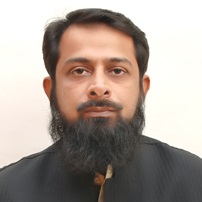أنت هنا
 Dr. Usama Umer from Advanced Manufacturing Institute at KSU presented his views on Modeling Aspects in Machining on last week.
Dr. Usama Umer from Advanced Manufacturing Institute at KSU presented his views on Modeling Aspects in Machining on last week.
The presentation was about 2D finite element models (FEM) to simulate orthogonal machining of particle reinforced aluminum based metal matrix composites (MMC).
The models predict cutting forces, chip morphology, temperatures and stresses distributions. The simulations were carried out by developing a fully coupled temperature displacement model. In contrast to the equivalent homogeneous material (EHM) methodology, a heterogeneous model is developed based on reinforcement particle size and volume fraction. This allows models to simulate the local effects such as tool-reinforcement particle interaction, reinforcement particle debonding.
Further, Dr. Umer stated, the interface between the reinforcement particles and the matrix is modeled by using two approaches; with and without cohesive zone elements. Similarly the chip separation is modeled with and without using a parting line. The effect of different methodologies on the model development, simulation runs and predicted results have been discussed.
Dr. Umer concluded his presentation with, the results are compared with experimental data and it has been found that the utilization of cohesive zone modeling (CZM) with the parting line approach seems to be the best one for the modeling of MMC machining.
Related News